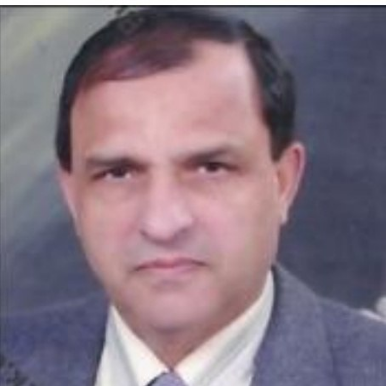International Journal of Mathematical Sciences and Computing (IJMSC)
IJMSC Vol. 7, No. 4, 8 Dec. 2021
Cover page and Table of Contents: PDF (size: 1052KB)
Inhomogeneous Assessment of New Mechanism of Adaptive Detection of Partially-correlated χ2-Targets
Full Text (PDF, 1052KB), PP.1-20
Views: 0 Downloads: 0
Author(s)
Index Terms
Adaptive detection, post-detection integration, χ2-distribution of 2-degrees of freedom, fluctuating targets, Swerling models, partially-correlated χ2-targets, target multiplicity environments.
Abstract
Owing to its merits in fluctuating radar targets detection, the scenario of fusion structure has rapidly become a methodology of choice. The base goal of this paper is to analyze the linear type of this methodology, which is termed as linear fusion (LF). The target of interest along with fallacious ones is assumed to be fluctuating obeying χ2-model of two-degrees of freedom in their fluctuation, with particular attention on partially-correlated target returns. Closed-form expression is derived for the detection performance of the proposed processor. The analytical results are validated with computer simulation. Our simulation results demonstrate that the LF model yields impressive detection performance in terms of detection performance and CFAR loss, in comparison with the conventional schemes in the case where the operating environment is free of or contaminated with interferers. Additionally, the LF homogeneous performance outweighs that of Neyman-Pearson (N-P) detector, which is the yardstick of the CFAR world. Moreover, the LF structure has the capability of holding the rate of false alarm fixed against the presence of interferers. The ability to obtain improved performance compared to existing models is the major contribution of this research.
Cite This Paper
Mohamed Bakry El-Mashede," Inhomogeneous Assessment of New Mechanism of Adaptive Detection of Partially-correlated χ2-Targets ", International Journal of Mathematical Sciences and Computing(IJMSC), Vol.7, No.4, pp. 1-20, 2021. DOI: 10.5815/ijmsc.2021.04.01
Reference
[1]W. Q. Wang, “Radar Systems: Technology, Principals and Applications”, Nova Science Publishers, Inc, 2013.
[2]El Mashade, M. B., "Monopulse detection analysis of the trimmed mean CFAR processor in nonhomogeneous situations", IEE Proc. Radar, Sonar Navig., Vol. 143, No. 2 , pp.87-94, April 1996.
[3]Swerling, P., “Radar probabilitity of detection for some additional fluctuating target cases”, IEEE Transactions Aerospace and Electronic Systems, AES-33, No. 2, (April 1997), pp. 698-709.
[4]El Mashade, M. B., “Partially correlated sweeps detection analysis of mean-level detector with and without censoring in nonideal background conditions”, Int. J. Electron. Commun. (AEŰ), Vol.53, No.1, (Feb. 1999), pp. 33-44.
[5]A. R. Elias-Fustfc, A. Broquetas-Ibars, J. P. Antequera, J.C. M. Yuste, "CFAR Data Fusion Center with inhomogeneous Receivers", IEEE Transactions on Aerospace and Electronic Systems, Vol. 28, No.1, January 1992, pp.276-285.
[6]Z. Hammoudi and F. Soltani, “Distributed CA-CFAR and OS-CFAR detection using fuzzy spaces and fuzzy fusion rules”, IEE Proc. Radar Sonar Navig., 2004, 151(3), pp. 135–142.
[7]El Mashade, M. B., "Analysis of Cell-Averaging Based Detectors for χ2 Fluctuating Targets in Multitarget Environments", Journal of Electronics (China), Vol.23, No.6, (November 2006), pp. 853-863.
[8]L. Zhao, W. Liu, X. Wu and J.S. Fu, "A novel approach for CFAR processors design", Proc. of the IEEE International Conference on Radar, Atlanta, GA, 1-3 May 2001, pp. 284–288.
[9]Santos Lopez-Estrada, René Cumplido, "Fusion center with neural network for target detection in background clutter", Proc. of the Sixth Mexican International Conference on Computer Science (ENC'05), 2005.
[10]El Mashade, M. B., “Performance Analysis of OS Structure of CFAR Detectors in Fluctuating Target Environments”, Progress In Electromagnetics Research C, Vol.2, pp. 127-158, 2008.
[11]J. R. Machado-Fernández, N. Mojena-Hernández, J. Bacallao-Vidal, "Evaluation of CFAR detectors performance”, ITECKNE Vol. 14, No. 2, December 2017, pp.170 – 178.
[12]L. Zhao, W. Liu, J. S. Fu, S. Yong Seow and X. Wu, “Two New CFAR Detectors Based on Or- Algorithm and And-Algorithm”, Proceedings of SCOReD 2001, KL, Malaysia, pp. 31-34, 2001.
[13]A. Farrouki and M. Barkat, “Automatic censored mean level detector using a variability-based censoring with non-coherent integration”, Signal Processing, 2007, 87, pp. 1462–1473.
[14]D. Ivković, B. Zrnić and M. Andrić, "Fusion CFAR detector in receiver of the software defined radar", Proc. of the International Radar Symposium IRS-2013, Dresden, Germany, 19-21 June 2013.
[15]El Mashade, M. B., “Performance superiority of CA_TM model over N-P algorithm in detecting χ2 fluctuating targets with four-degrees of freedom”, Int. J. Systems, Control and Communications, Vol. 11, No. 1, pp. 92-118, 2020.
[16]El Mashade, M. B., “ Partially-Correlated χ2 Targets Detection Analysis of GTM-Adaptive Processor in the Presence of Outliers”, I.J. Image, Graphics and Signal Processing, 2014, 12, 70-90
[17]El Mashade, M. B., "Adaptive Detection Enhancement of Partially-Correlated χ2 Targets in an Environment of Saturated Interference”, Recent Advances in Electrical & Electronic Engineering, Vol. 9, No. 2, pp.1-21, 2016.
[18]El Mashade, M. B., “Heterogeneous Performance Analysis of the New Model of CFAR Detectors for Partially-Correlated χ2-Targets”, Journal of Systems Engineering and Electronics, Vol. 29, No. 1, February 2018, pp.1 – 9.
[19]El Mashade, M. B., "Inhomogeneous Performance Evaluation of a New Methodology for Fluctuating Target Adaptive Detection", Progress In Electromagnetics Research C, Vol. 107, 273–286, 2021.
[20]El Mashade, M. B., "M-Sweeps multi-target analysis of new category of adaptive schemes for detecting χ2-fluctuating targets”, Journal of Information and Telecommunication, Vol. 4, No. 3, 314–345, 2020.
